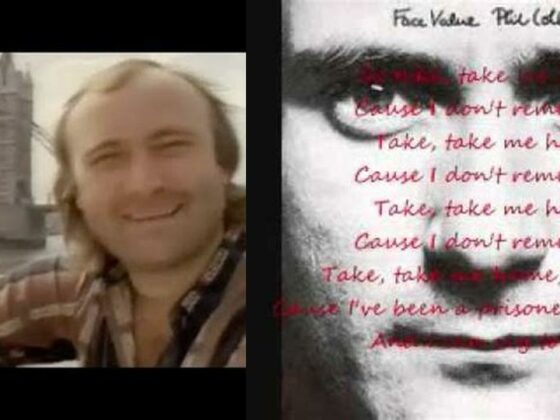Welcome to a journey through the heart of country music with “Waymore’s Blues”! Have you ever wondered about the deeper meaning behind this timeless classic? Join us as we unravel the heartfelt lyrics, explore the song’s significance, and uncover the soulful essence of “Waymore’s Blues.” Get ready to dive into the world of Waylon Jennings and discover the true essence of this beloved song.
Waymore’s Blues: A Journey Through the Heart of Country Music
In the vast tapestry of country music, few songs capture the essence of the genre like “Waymore’s Blues,” a heartfelt ballad that delves into the trials and tribulations of a touring musician. Released in 1975, the song is a testament to the enduring spirit of Waylon Jennings, the man behind the iconic moniker “Waymore,” and his profound understanding of the musician’s life.
With its simple yet evocative instrumentation and Jennings’ raw, emotive vocals, “Waymore’s Blues” paints a vivid picture of the lonesome highway, the endless miles, and the longing for home that weighs heavily on the heart of a musician on the road. The song’s lyrics, co-written by Jennings and his long-time collaborator Curtis Buck, are a poignant reflection of the sacrifices and struggles that come with pursuing a life on stage.
Unraveling the Song’s Heartfelt Lyrics
“Waymore’s Blues” begins with a stark admission, setting the stage for the song’s melancholic tone: “I’m a-rollin’, a-rollin’, a-rollin’ along, got a song to sing, got a story to tell.” With these opening lines, Jennings establishes the nomadic existence of a touring musician, constantly moving from town to town, carrying their music and their stories.
The chorus, with its haunting refrain, encapsulates the yearning for home and the longing for a sense of belonging: “Waymore’s blues, got the Waymore’s blues, can’t you see I’m just a prisoner of this music?” Jennings’ voice, weathered and worn from years of hard living, conveys the weight of his longing, the ache of being constantly uprooted and alone.
Throughout the song, Jennings weaves a tapestry of images that paint a vivid picture of the musician’s life on the road. He sings of the “neon lights a-flashin’ by,” the “honky-tonk bars where the music’s loud,” and the “truckers a-rumblin’ down the highway.” These images capture the sensory overload of the touring life, the constant stimulation that can be both exhilarating and exhausting.
A Deeper Dive into the Song’s Significance
“Waymore’s Blues” is more than just a song; it is a testament to the resilience and determination of musicians who dedicate their lives to their craft. Jennings himself was a prime example of this unwavering commitment. He was a pioneer of the outlaw country movement, a genre that challenged the conventions of traditional country music and pushed the boundaries of the genre.
Jennings’ songwriting prowess shines through in “Waymore’s Blues.” He had a knack for capturing the raw emotions of the human experience, and this song is a prime example. The lyrics are simple yet evocative, using everyday language to convey profound truths about the human condition.
The song’s instrumentation is equally understated, with finger-picked electric guitar, bass, drums, and Jennings’ vocals taking center stage. This stripped-down approach allows the lyrics to carry the message, creating a powerful and intimate connection between the artist and the listener.
“Waymore’s Blues”: A Timeless Classic
“Waymore’s Blues” stands as a timeless classic in the annals of country music. Its simple yet profound lyrics, combined with Jennings’ emotive vocals and masterful storytelling, have resonated with generations of listeners. The song is a reminder of the sacrifices and struggles that musicians endure in pursuit of their passion, and it pays tribute to the enduring power of music to connect us and touch our souls.
Whether you’re a seasoned country music fan or new to the genre, “Waymore’s Blues” is a song that deserves a place on your playlist. Its timeless appeal and poignant message will continue to captivate listeners for years to come.
Questions & FAQ about Waymore’s Blues Meaning
What is “Waymore’s Blues” about?
The song “Waymore’s Blues” delves into the trials and tribulations of a touring musician, capturing the essence of the country music genre.
When was “Waymore’s Blues” released?
The song was released in 1975.
Who is the man behind the moniker “Waymore”?
Waymore is the iconic moniker of Waylon Jennings, the artist behind “Waymore’s Blues.”
Who co-wrote the lyrics of “Waymore’s Blues” with Waylon Jennings?
The lyrics of “Waymore’s Blues” were co-written by Jennings and his long-time collaborator Curtis Buck.
What does “Waymore’s Blues” vividly depict?
The song vividly depicts the lonesome highway, the endless miles, and the longing for home that weighs heavily on the heart of a musician on the road.
What is the significance of the song “Waymore’s Blues” in the country music genre?
“Waymore’s Blues” is a testament to the enduring spirit of Waylon Jennings and his profound understanding of the musician’s life, reflecting the sacrifices and struggles that come with pursuing a life on stage.


